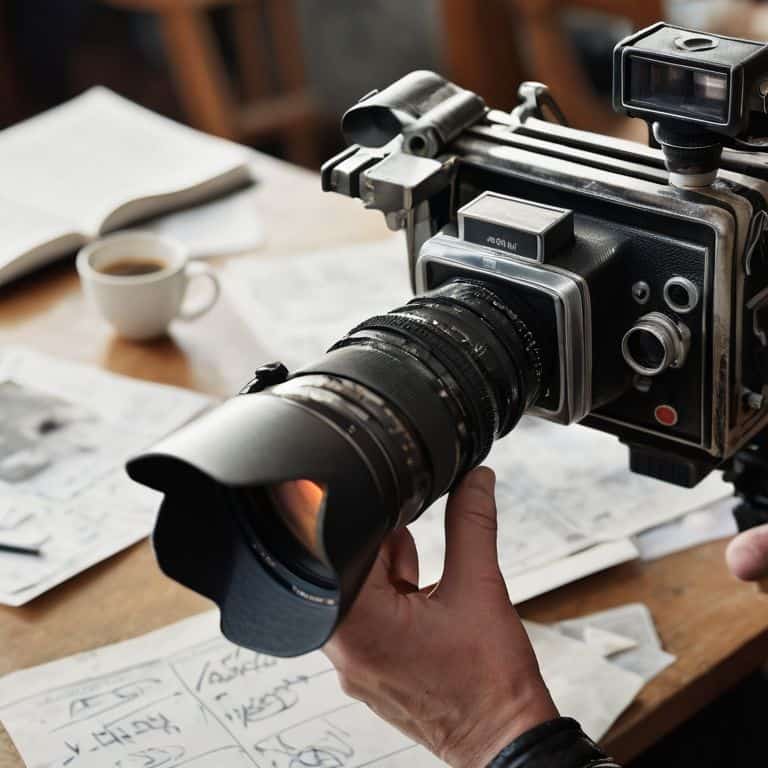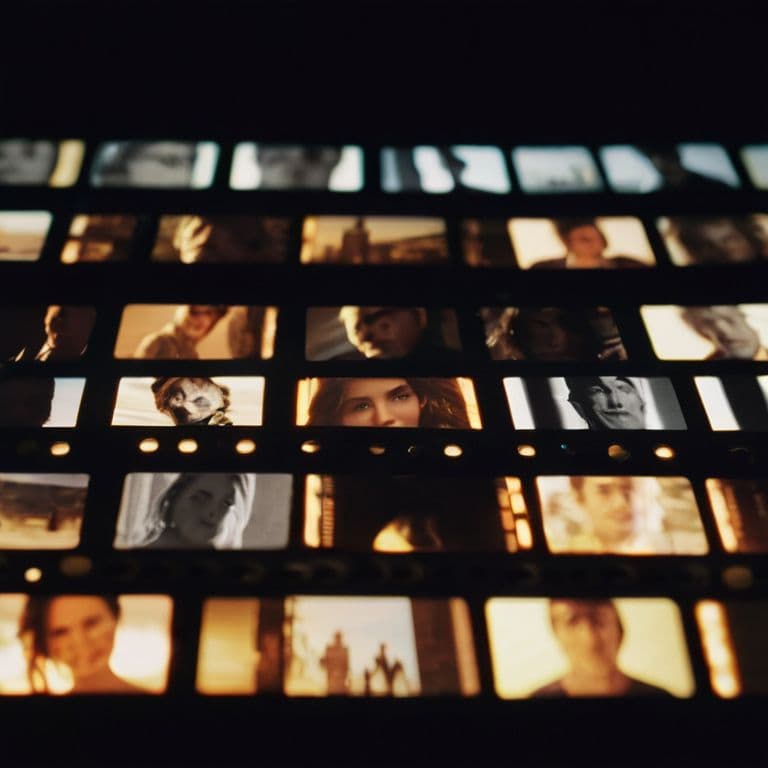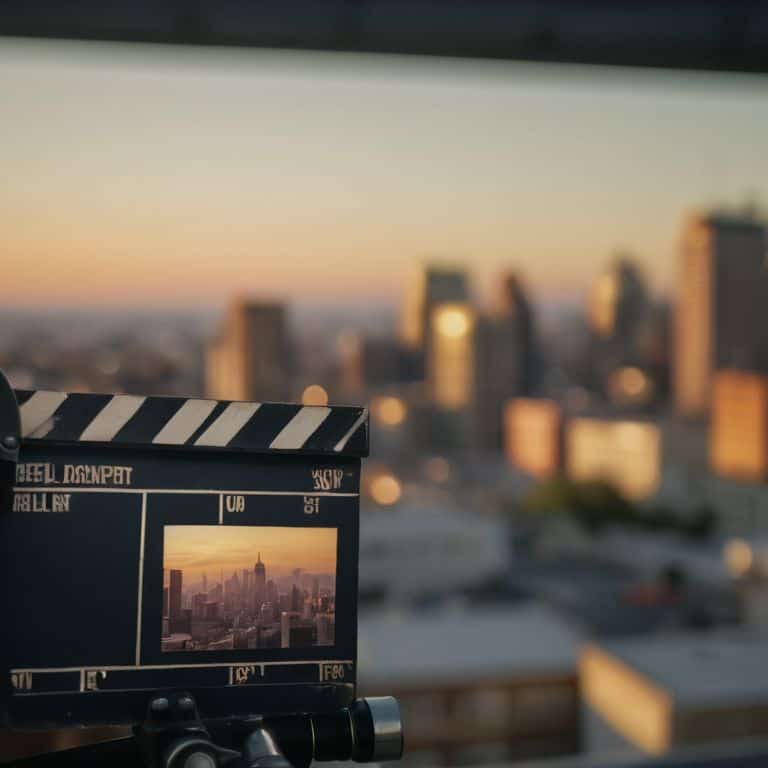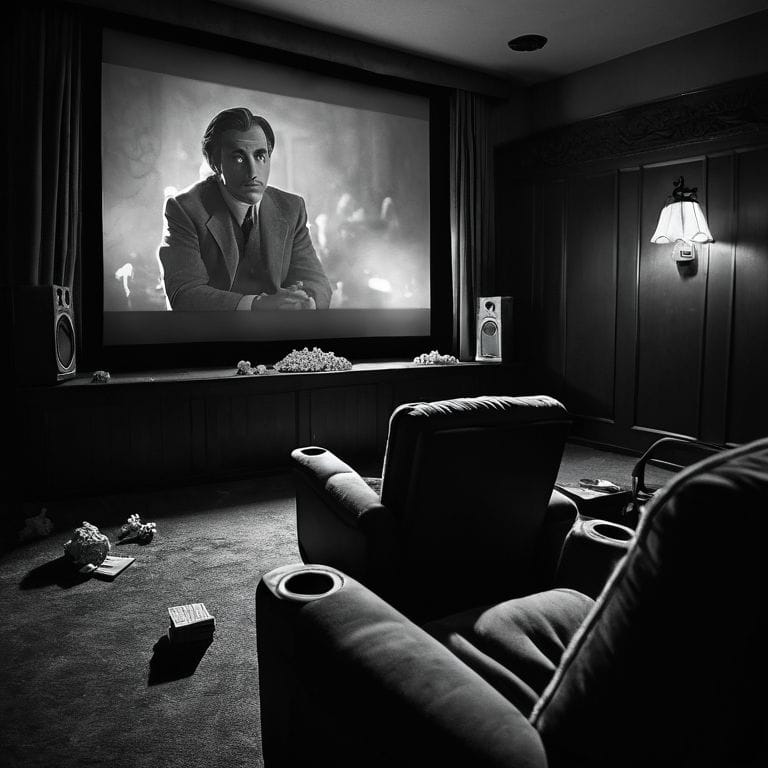I still remember the first time I realized that understanding cinematic language wasn’t just about memorizing film techniques, but about deciphering the secret codes that filmmakers use to speak directly to our psyche. It was during a screening of Kubrick’s 2001: A Space Odyssey, where the eerie silence and meticulous cinematography transported me to a world that was both haunting and thought-provoking. As a former music journalist turned academic, I’ve always been fascinated by the way art can reflect our deepest anxieties and desires. But what frustrates me is the overcomplication of cinematic language, making it seem like an exclusive club that only a select few can understand.
As someone who’s spent years curating an obscure film club and exploring the urban landscape, I’ve come to realize that understanding cinematic language is not just about analyzing films, but about experiencing them. In this article, I promise to cut through the hype and provide you with honest, experience-based advice on how to unlock the secrets of cinematic language. I’ll share my own stories, from the trenches of film festivals to the classrooms where I teach, to show you that understanding cinematic language is not just about theory, but about connection. By the end of this journey, you’ll be equipped with the tools to decode the hidden meanings behind your favorite blockbusters and discover a whole new level of appreciation for the art of filmmaking.
Table of Contents
Cracking Cinemas Code

As I delve into the world of cinema, I’m reminded that film narrative structure is more than just a sequence of events – it’s a carefully crafted journey that influences our emotional response. By analyzing the visual motifs and cinematic symbolism, we can uncover the underlying themes and messages that resonate with audiences. For instance, the use of high-angle shots can create a sense of vulnerability, while low-angle shots can evoke feelings of power and dominance.
The soundtrack composition techniques used in movies can also significantly impact our emotional state. A well-crafted score can elevate the tension or amplify the emotional payoff of a scene, making us more invested in the story. Moreover, the color palette in movie production is not just a matter of aesthetics; it’s a deliberate choice that can influence our mood and perception. Warm colors can create a sense of comfort, while cool colors can evoke a sense of unease.
By applying visual motif analysis, we can decipher the hidden meanings behind a film’s imagery and better comprehend the director’s vision. This, in turn, allows us to appreciate the camera angle psychology at play, which can manipulate our perspective and emotional response. As we crack the code of cinematic language, we gain a deeper understanding of the storytelling process and the ways in which films reflect and shape our collective psyche.
Film Narrative Hidden Meanings
As we delve into the world of film narrative, it’s astounding how often hidden meanings are woven into the fabric of our favorite movies. A careful analysis of cinematography, editing, and sound design can reveal a wealth of information about the themes and emotions the filmmakers are trying to convey.
The use of symbolism in film narrative is a powerful tool for conveying complex ideas and emotions. By incorporating symbols and motifs into the story, filmmakers can add depth and layers to the narrative, inviting viewers to interpret and reflect on the themes and messages being presented.
Visual Motif Analysis Beyond Faces
As we delve deeper into the world of cinematic language, we find that visual motifs play a crucial role in conveying themes and emotions. The recurrence of certain images or patterns can evoke a sense of continuity, while also hinting at underlying symbolism. By examining these motifs, we can gain a deeper understanding of the filmmaker’s intent and the emotional resonance of the film.
The use of lighting techniques can also be a powerful visual motif, influencing the mood and atmosphere of a scene. For instance, high-contrast lighting can create a sense of tension, while warm lighting can evoke feelings of comfort and nostalgia.
Understanding Cinematic Language

As I delve into the world of cinema, I’m reminded that film narrative structure is more than just a sequence of events – it’s a carefully crafted puzzle that reveals the filmmaker’s intentions. The way a story unfolds, the characters’ arcs, and the plot twists all contribute to a richer understanding of the cinematic language. By analyzing these elements, we can uncover hidden meanings that resonate with our collective psyche.
The use of visual motif analysis is another crucial aspect of cinematic language. Beyond the obvious faces and characters, it’s the subtle details that speak volumes about the narrative. Cinematic symbolism examples, such as the repetition of certain colors or objects, can convey themes and emotions that might otherwise go unnoticed. For instance, a recurring motif of doors and windows can represent transition, freedom, or confinement, adding depth to the story.
As we explore the realm of cinematic language, it’s essential to consider the soundtrack composition techniques that accompany the visual elements. The strategic use of music and sound effects can elevate the emotional impact of a scene, creating a harmonious balance between what we see and what we hear. Additionally, the color palette in movie production plays a significant role in setting the tone and atmosphere, with different hues evoking distinct emotions and moods. By examining these elements, we can gain a deeper appreciation for the art of filmmaking and the ways in which cinematic language influences our perceptions.
Cinematic Symbolism Examples the Deeper Cut
As we delve into the realm of cinematic symbolism, we find that certain elements can be interpreted in multiple ways, adding layers of depth to the narrative. The use of lighting, for instance, can convey a character’s emotional state, with high-contrast lighting often symbolizing inner turmoil.
In films like “Blade Runner,” visual metaphors are used to explore complex themes, such as humanity and what it means to be alive. The replicants, with their artificially created existence, serve as a commentary on our own society’s values and morals, inviting viewers to question the nature of reality.
Soundtrack Composition the Psyches Score
The soundtrack of a film is more than just a collection of songs – it’s a deliberate attempt to manipulate our emotions and guide our interpretation of the narrative. A well-crafted score can elevate a scene from mundane to unforgettable, tapping into our collective psyche and resonating long after the credits roll.
By examining the sonic landscape of a movie, we can gain insight into the director’s vision and the themes they aimed to convey. The careful selection of instruments, melodies, and sound effects creates a rich tapestry that underscores the action on screen, often revealing subtle nuances that might otherwise go unnoticed.
Unraveling the Reel: 5 Keys to Decoding Cinematic Language
- Pay attention to the mise-en-scène, as the arrangement of everything within a frame – from characters to props – conveys themes and emotions that underpin the narrative
- Learn to recognize and interpret visual motifs, which are repeated patterns or images that carry specific meanings, such as the use of water to symbolize transformation or renewal
- Analyze the soundtrack composition, considering how the score, dialogue, and sound effects work together to evoke emotions and create tension, revealing the psyche’s underlying fears and desires
- Consider the director’s use of camera angles, movement, and lighting to influence the audience’s perception of characters and events, often employing techniques like low-angle shots to convey power or high-angle shots to suggest vulnerability
- Look beyond the surface level of dialogue and narrative, instead seeking out the subtext that reveals character motivations, societal commentary, and the filmmaker’s personal perspective, which can be found in the silences, glances, and pauses between the lines
Key Takeaways: Unpacking Cinematic Language
By deciphering the visual and auditory elements of film, we can uncover hidden meanings and themes that reveal the collective psyche of our era, often reflecting our deepest anxieties and desires
Cinematic language is not just about aesthetics; it’s a complex system of symbols, motifs, and soundscapes that, when analyzed, can provide profound insights into the human condition, echoing the sentiments of our favorite sitcoms and memes
Ultimately, understanding cinematic language empowers us as viewers to move beyond passive consumption, instead becoming active participants in the cultural conversation, capable of critiquing and questioning the narratives that shape our understanding of the world
Unpacking the Silver Screen
Cinematic language is not just a series of visual and auditory cues; it’s a clandestine messenger that whispers our deepest fears, desires, and societal anxieties back to us, if we only learn to listen.
Julian Thorne
Beyond the Screen: A New Perspective

As we’ve explored the intricacies of cinematic language, from film narrative to visual motif analysis, it’s become clear that there’s more to our favorite blockbusters than meets the eye. By cracking cinema’s code, we can uncover hidden meanings, symbolism, and even psychological insights that reflect our collective psyche. Whether it’s the careful composition of a soundtrack or the subtle use of cinematic symbolism, every element of a film contributes to a richer understanding of the world we live in. This journey into the heart of cinematic language has been a wild ride, full of unexpected twists and turns that have left me questioning everything I thought I knew about the movies.
So, the next time you find yourself immersed in a silver screen spectacle, remember that you’re not just watching a film – you’re experiencing a complex web of cultural references, symbolic meanings, and emotional resonances that can reveal as much about ourselves as they do about the world around us. As we continue to explore, analyze, and dissect the cinematic landscape, let’s not forget to marvel at its beauty, its power, and its ability to inspire us to think differently, to feel deeply, and to see the world in a whole new light.
Frequently Asked Questions
How can analyzing cinematic language help me better understand the themes and messages in my favorite films?
By decoding cinematic language, you’ll uncover the subtle cues and symbolism that reveal a film’s true themes and messages, often hidden in plain sight. It’s like gaining a new pair of eyes to see beyond the surface level, and into the very psyche of the filmmakers and the era they reflected.
What role does the viewer's personal experience and cultural background play in interpreting cinematic language?
Our personal experiences and cultural backgrounds are the lenses through which we decode cinematic language, coloring our interpretations with unique shades of meaning – it’s what makes a film’s impact so intensely personal and subjective.
Can understanding cinematic language also inform my own creative work, such as filmmaking or screenwriting, and if so, how?
Absolutely, grasping cinematic language can revolutionize your filmmaking or screenwriting, allowing you to convey complex emotions and themes with precision and depth, and to subtly weave in social commentary that resonates with your audience on a profound level.
